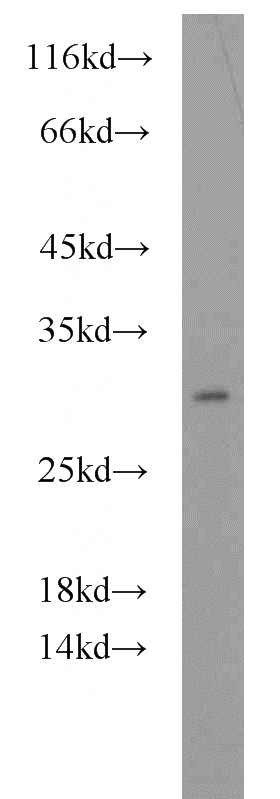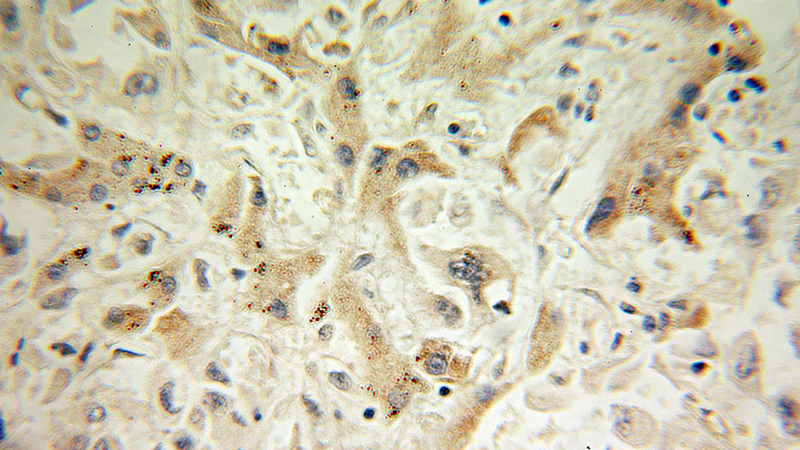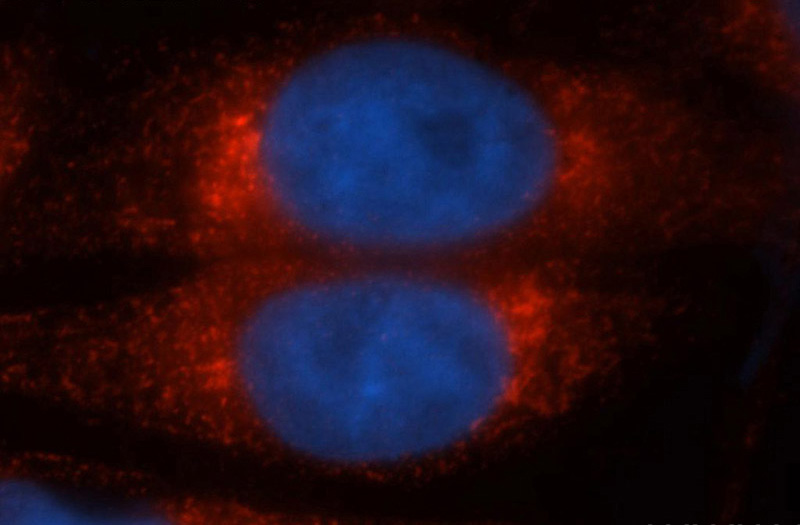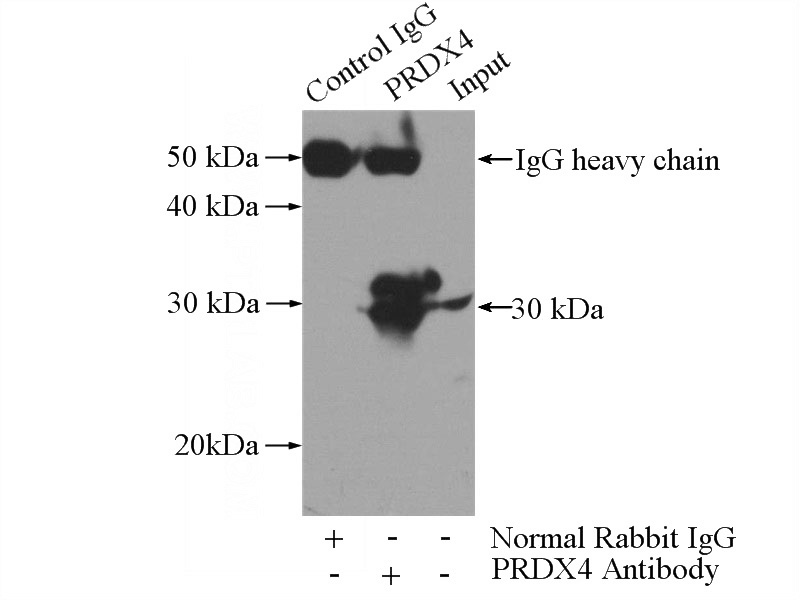-
Product Name
PRDX4 antibody
- Documents
-
Description
PRDX4 Rabbit Polyclonal antibody. Positive FC detected in HepG2 cells. Positive IHC detected in human pancreas cancer tissue, human prostate cancer tissue. Positive IF detected in HepG2 cells. Positive WB detected in HepG2 cells. Positive IP detected in HepG2 cells. Observed molecular weight by Western-blot: 30kd
-
Tested applications
ELISA, WB, IHC, IF, FC, IP
-
Species reactivity
Human,Mouse,Rat; other species not tested.
-
Alternative names
Antioxidant enzyme AOE372 antibody; AOE37 2 antibody; peroxiredoxin 4 antibody; Peroxiredoxin IV antibody; PRDX4 antibody; PRX 4 antibody; Prx IV antibody; Thioredoxin peroxidase AO372 antibody
-
Isotype
Rabbit IgG
-
Preparation
This antibody was obtained by immunization of PRDX4 recombinant protein (Accession Number: NM_006406). Purification method: Antigen affinity purified.
-
Clonality
Polyclonal
-
Formulation
PBS with 0.1% sodium azide and 50% glycerol pH 7.3.
-
Storage instructions
Store at -20℃. DO NOT ALIQUOT
-
Applications
Recommended Dilution:
WB: 1:200-1:2000
IP: 1:200-1:2000
IHC: 1:20-1:200
IF: 1:20-1:200
-
Validations

HepG2 cells were subjected to SDS PAGE followed by western blot with Catalog No:114177(PRDX4 antibody) at dilution of 1:800

Immunohistochemical of paraffin-embedded human pancreas cancer using Catalog No:114177(PRDX4 antibody) at dilution of 1:100 (under 10x lens)

Immunofluorescent analysis of HepG2 cells, using PRDX4 antibody Catalog No:114177 at 1:50 dilution and Rhodamine-labeled goat anti-rabbit IgG (red). Blue pseudocolor = DAPI (fluorescent DNA dye).

IP Result of anti-PRDX4 (IP:Catalog No:114177, 3ug; Detection:Catalog No:114177 1:500) with HepG2 cells lysate 4000ug.

1X10^6 HepG2 cells were stained with 0.2ug PRDX4 antibody (Catalog No:114177, red) and control antibody (blue). Fixed with 90% MeOH blocked with 3% BSA (30 min). Alexa Fluor 488-congugated AffiniPure Goat Anti-Rabbit IgG(H+L) with dilution 1:1000.
-
Background
PRDX4(Peroxiredoxin-4) is also named as AOE37-2, Prx-IV and belongs to the AhpC/TSA family. PRDX4 is associated with acrosome formation during rat spermatogenesis and has a protective role in the male reproductive tract, because the phenotype of mice lacking this isoform includes testicular atrophy and increased sperm DNA damage(PMID:20864641). It is initially synthesized as a membrane-binding 31-kDa protein and processed into a 27-kDa secretory form and is discarded with the residual bodies(PMID:19208552). PRDX4 is a pentamer of dimers(PMID:23025503). This antibody is speific to PRDX4.
-
References
- Chen JH, Ni RZ, Xiao MB, Guo JG, Zhou JW. Comparative proteomic analysis of differentially expressed proteins in human pancreatic cancer tissue. Hepatobiliary & pancreatic diseases international : HBPD INT. 8(2):193-200. 2009.
- Bao H, Song P, Liu Q. Quantitative proteomic analysis of a paired human liver healthy versus carcinoma cell lines with the same genetic background to identify potential hepatocellular carcinoma markers. Proteomics. Clinical applications. 3(6):705-19. 2009.
Related Products / Services
Please note: All products are "FOR RESEARCH USE ONLY AND ARE NOT INTENDED FOR DIAGNOSTIC OR THERAPEUTIC USE"
